art
+
research
+
technology
=
our reason to be
research guides our solutions
technology drives our executions
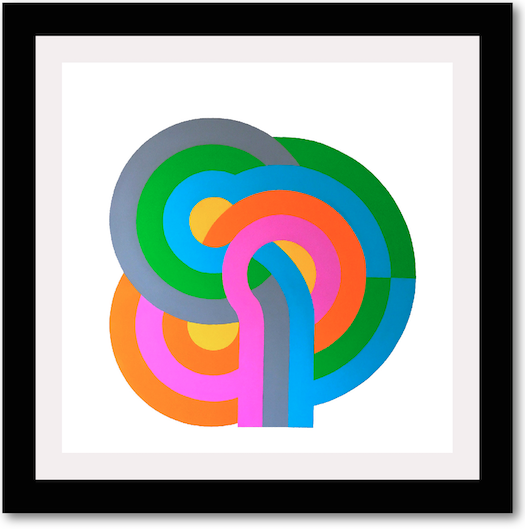
Works of art are good things to think about.
Art is often ambiguous and open to multiple interpretations, much like the real world. Art invites critical analysis to support different interpretations. The world is a really complex place but it's also a really vivid place and, in a sense, works of art have those qualities. Initially intended to be used by K-12 educators, now museum educators also use works of art in ways that develop building blocks of critical thinking like
- reasoning
- questioning & investigating
- observing & describing
- exploring viewpoints
- finding complexity, and
- comparing & connecting
Critical thinking is the essence of research. Our first principles approach draws parallels from philosophies of minimalism art, right into business and research. Subtract layers of assumptions until you reach a foundational truth, then work the problem inside-out, to reach a solution. The result is characterised by extreme simplicity of form, and a reduction to rigorous clarity.
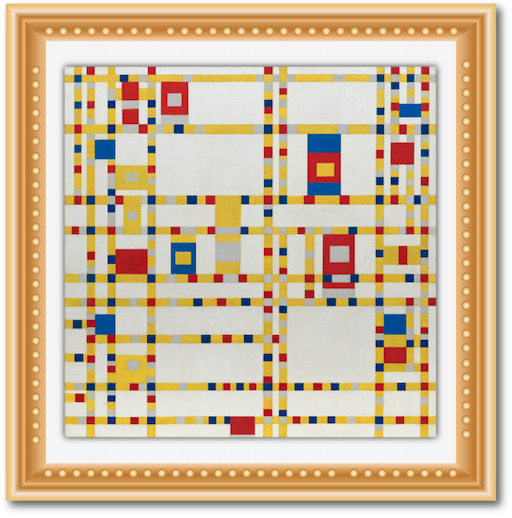
Our excitement about minimalism art lies most of all in its pure preoccupation with the invention and arrangement of basic forms, shapes, and colors, to the exclusion of whatever is not necessarily implicated in these factors. Minimalism is not subtraction for the sake of subtraction, minimalism is subtraction for the sake of focus. Our love affair with visual art is unashamedly pasted all over the website. Each has its rightful place, its own story.
Here’s a list of all the art works on the website
Color Bands
Sol Lewitt
2000
linocut on paper
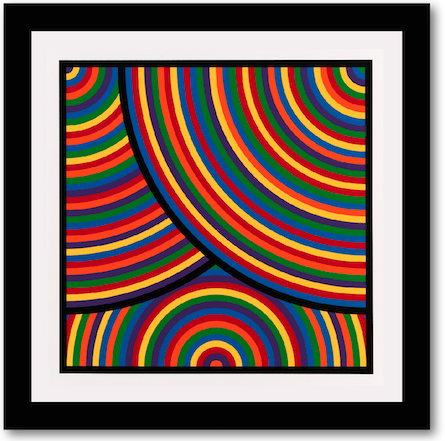
Sol LeWitt’s work explores the near infinite possibilities of color and line. Color Bands is a series of eight prints in which mesmerizing curves and lines play on the optical effects of adjacent colors. LeWitt was a self-proclaimed conceptual artist who believed that his finished artworks served as concepts rather than as inherently valuable objects. For Color Bands, he composed a set of drawings and measurements that were executed by a master printmaker.
Wall Drawing 797
Sol Lewitt
1995
Color markers on wall
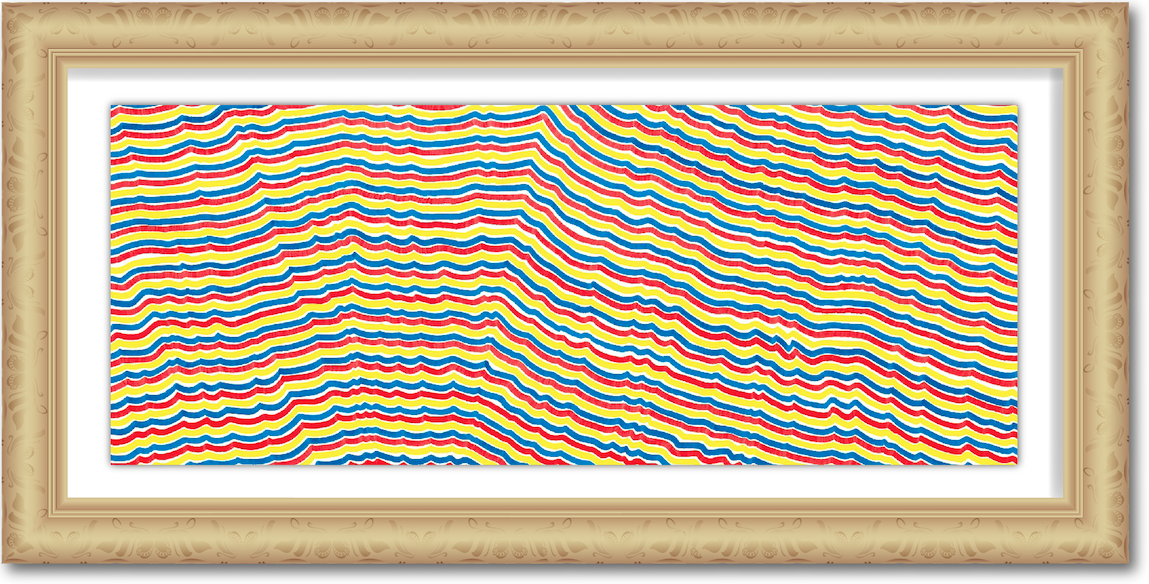
Wall Drawing 797 was first created for the 1995 exhibit In Two Worlds: Graphic Art by Modern Sculptors, at the Mead Art Museum, Amherst College. The drawing, conceived with student participation in mind, was first executed by four Amherst College sculpture students. The instructions for the drawing direct draftsmen to copy, without touching, the line made by the previous draftsman. The repeated process becomes an exploration of the intricacies of the line. This reflects LeWitt’s belief that the draftsman’s contributions are unable to be predicted by the artist. As the draftsman repeatedly copies the line, it becomes drastically altered from its original state, and the smooth original line becomes more and more nervous as it is redrawn.
Broadway Boogie Woogie
Piet Mondrain
1942-43
Oil paint

Mondrian arrived in New York in 1940, one of the many European artists who moved to the United States to escape World War II. He immediately fell in love with the city and with boogie-woogie music, to which he was introduced on his first evening in New York. Soon he began, as he said, to put a little boogie-woogie into his paintings.
Mondrian’s aesthetic doctrine of Neo-Plasticism restricted the painter to the most basic kinds of line—that is, to straight horizontals and verticals—and to a similarly limited color range, the primary triad of red, yellow, and blue plus white, black, and the grays in between. But Broadway Boogie Woogie omits black and breaks Mondrian’s once uniform bars of color into multicolored segments. Bouncing against each other, these tiny, blinking blocks of color create a vital and pulsing rhythm, an optical vibration that jumps from intersection to intersection like traffic on the streets of New York. At the same time, the picture is carefully calibrated, its colors interspersed with gray and white blocks.
Venn
Orlando Campbell
2019
Acrylic on canvas

ORLANDO ROBIN CAMPBELL paints Venn diagrams in different shapes and ‘loud’ colours he can get by using house paint and gouache. The paintings and sculptures were made in his studio in France and some during the recent quarantine period. Orlando grew up with works by Frank Stella, Kenneth Noland, Eduardo Paolozzi and Patrick Caulfield, as his parents collected these artists over the years. He is drawn to the great American Color Field artists of the 1960’s, such as Kenneth Noland and Ellsworth Kelly.
Both Members Of This Club
George Bellows
1909
Oil on canvas
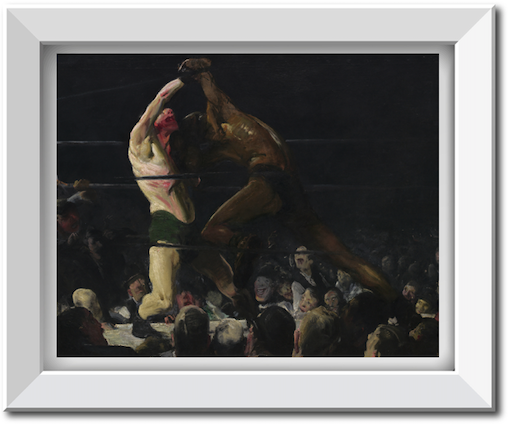
Painted in October 1909, the remarkably expressive and dynamic Both Members of This Club is the third and largest of George Bellows’ early prizefighting subjects. The painting’s title is a reference to the practice in private athletic clubs of introducing the contestants to the audience as “both members” to circumvent the Lewis Law of 1900 that had banned public boxing matches in New York State. Boxing was a controversial subject, but the interracial theme made this painting even more so, especially since the black boxer appears to be winning the match. It is likely that Bellows intended Both Members of This Club as an allusion to the recent and much-publicized success of the African American professional prizefighter Jack Johnson, who had won the world heavyweight championship in 1908. The idea of a black boxing champion was so unsettling to the prejudiced social order of the time that many thought interracial bouts should be outlawed. Painted at the height of the Jim Crow era, Bellows’ powerful delineation of a white fighter about to be defeated by a black opponent was an exceptionally daring and provocative piece of social commentary.
Tree Of Life
Gustav Klimt
2019
Oil on canvas
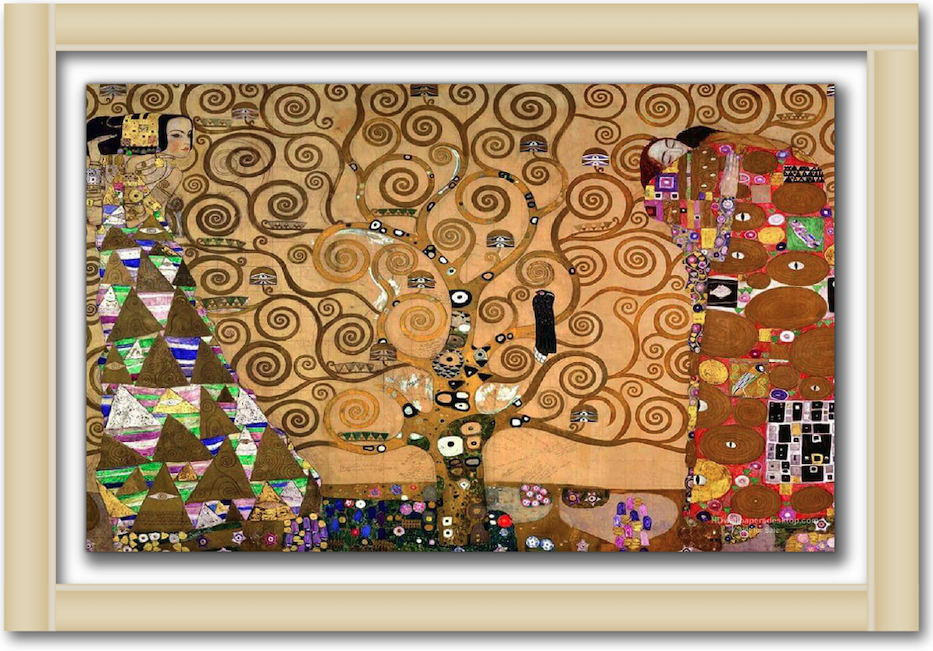
ORLANDO ROBIN CAMPBELL paints Venn diagrams in different shapes and ‘loud’ colours he can get by using house paint and gouache. The paintings and sculptures were made in his studio in France and some during the recent quarantine period. Orlando grew up with works by Frank Stella, Kenneth Noland, Eduardo Paolozzi and Patrick Caulfield, as his parents collected these artists over the years. He is drawn to the great American Color Field artists of the 1960’s, such as Kenneth Noland and Ellsworth Kelly.
Coffeepot for Masochists
Jacques Carelman
1969
Catalogue
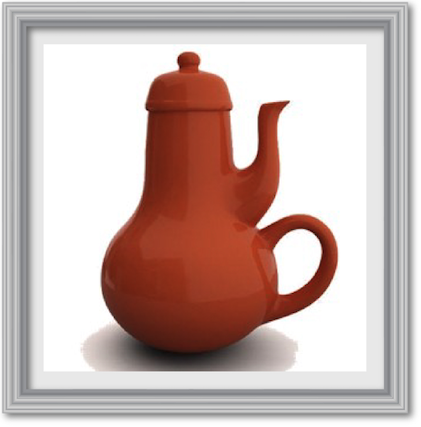
‘We believe that this design is sufficiently explicit for us not to have to burden it with details that could prove to be a source of distress.’ Thus the caption to the masochist’s coffee pot, the most famous item in Jacques Carelman’s 'Catalogue of unfindable things' (Catalogue d'objets introuvables, 1969). But its design left so much unsaid that this single object became the symbol of an entire critical approach to the design of everyday things.
Colorful Life
Wassily Kandinsky
1907
Tempera on canvas
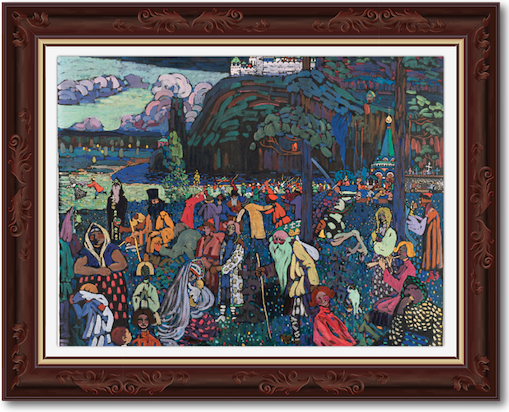
This joyful composition underlines the Russian roots of Kandinsky, and also provides a bright and groundbreaking artwork which displays peasant life in all its glory. Russia itself has gone through phases of self expression and then more restriction from ruling powers, but some how the nation has still managed to provide some incredible artists across a variety of movements. Kandinsky is probably the most famous of those today, perhaps just ahead of Marc Chagall, who himself was from modern-day Belarus. There was also some extraordinary political upheaval within the country in the early 20th century which again fuelled new art forms and interpretations, just as WWII would later do elsewhere in Europe. "...In Colorful life where I was carried away by the task to create the masses, spots and lines mixture, I used the bird’s eye panorama view to place the figures one behind the other. In order to settle zones boundaries and allocate the strokes as I wanted, I had to find a perspective excuses or pretexts for any particular case..."
Market in Jaffa
Gustav Bauernfeind
1887
Oil on canvas
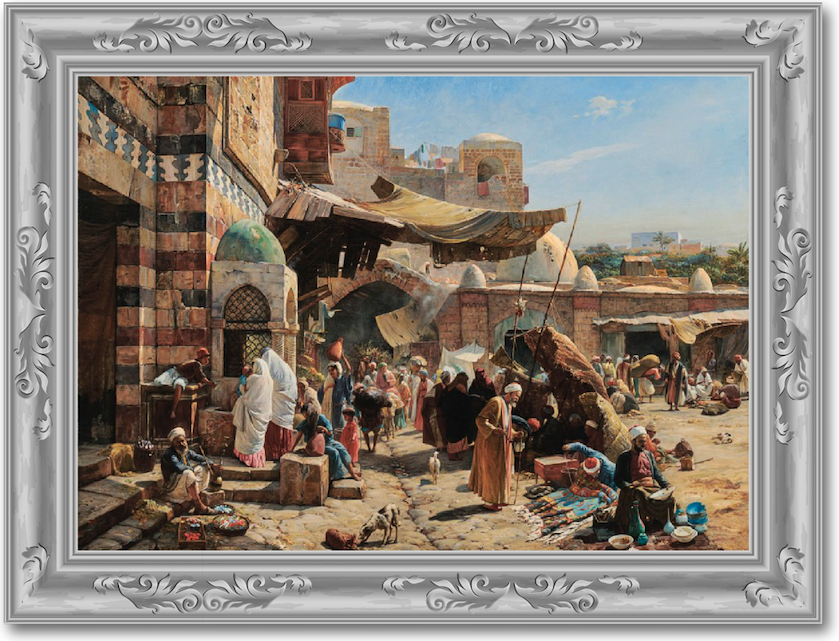
‘Painted in 1887, this animated market scene was no doubt inspired by Bauernfeind’s experience of harvest time in Palestine. In the middle ground on the left can be seen an abundant fruit stall including oranges and melon, while in the foreground on the left, a seated vendor sells peaches, ripe aubergines, and colourful blossom. The sellers of fresh produce rub shoulders with other merchants and craftsmen, including a weaver mending a Berber rug, a pottery seller, an arms merchant presenting a dagger to interested customers, and water and grain carriers, while a group of women seek refreshment at a well in the heat of the afternoon sun. Above the bustle on the rooftops, a woman makes aish shamsi flatbread; she allows the dough to rise in the sun, before baking it in the stone oven behind her.
Luncheon of the Boating Party
Pierre-Auguste Renoir
1880-81
Oil paint
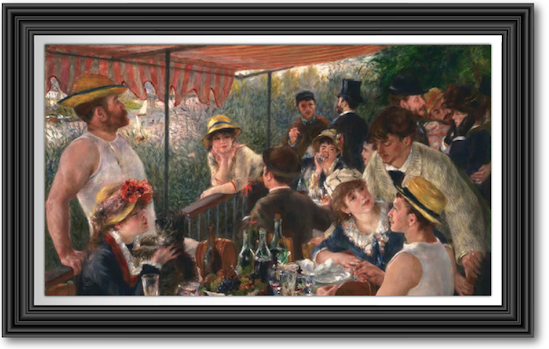
Luncheon of the Boating Party by Pierre-Auguste Renoir remains the best known and most popular work of art at The Phillips Collection, just as Duncan Phillips imagined it would be when he bought it in 1923. The painting captures an idyllic atmosphere as Renoir's friends share food, wine, and conversation on a balcony overlooking the Seine at the Maison Fournaise restaurant in Chatou. Parisians flocked to the Maison Fournaise to rent rowing skiffs, eat a good meal, or stay the night. The painting also reflects the changing character of French society in the mid- to late 19th century. The restaurant welcomed customers of many classes, including businessmen, society women, artists, actresses, writers, critics, seamstresses, and shop girls. This diverse group embodied a new, modern Parisian society.
Exodus
Margaret Bourke-White
1947
Photograph
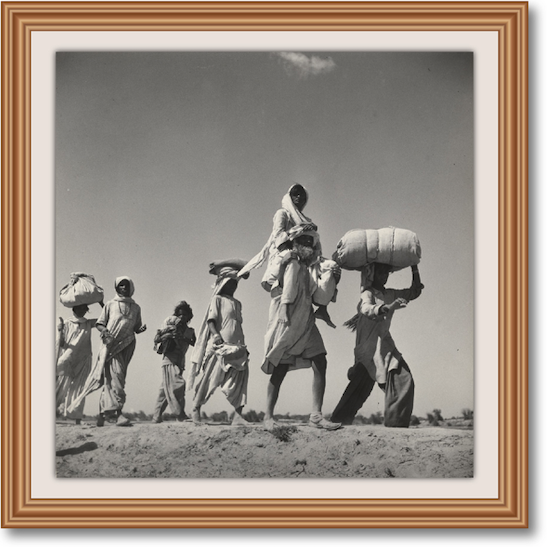
In India, Margaret Bourke-White is primarily known for her photographs that captured the Partition-related violence and migration, as it ushered in the new dawn of independence. Her photographic essay, The Great Migration: Five Million Indians Flee for Their Lives, was published in Life magazine on 3 November 1947. It had commissioned her to cover the exchange of populations that was taking place across the plains of the divided Punjab and she writes thus what she saw: “All roads between India and Pakistan were choked with streams of refugees. In scenes reminiscent of the Biblical times, hordes of displaced people trudged across the newly created borders to an uncertain future”
Still Life with Palette
Roy Lichtenstein
1972
Oil & manga on canvas
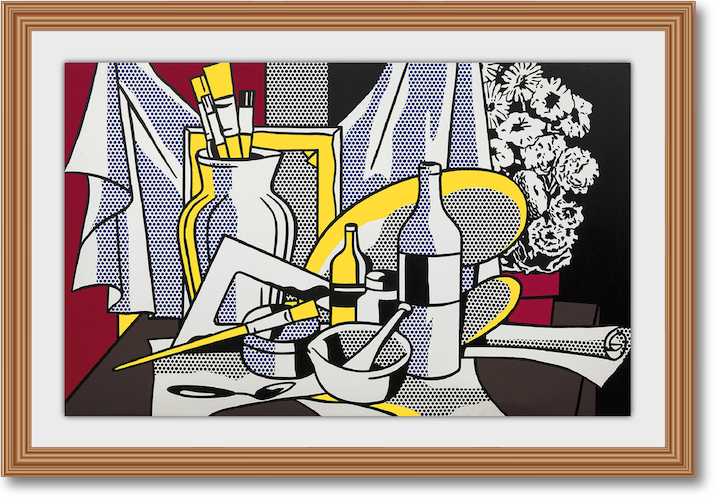
When American Pop artist Roy Lichtenstein painted Look Mickey in 1961, it set the tone for his career. This primary-color portrait of the cartoon mouse introduced Lichtenstein’s detached and deadpan style at a time when introspective Abstract Expressionism reigned. Mining material from advertisements, comics, and the everyday, Lichtenstein brought what was then a great taboo—commercial art—into the gallery. He stressed the artificiality of his images by painting them as though they’d come from a commercial press, with the flat, single-color Ben-Day dots of the newspaper meticulously rendered by hand using paint and stencils. Later in his career, Lichtenstein extended his source material to art history, including the work of Claude Monet and Pablo Picasso, and experimented with three-dimensional works. Lichtenstein’s use of appropriated imagery has influenced artists such as Richard Prince, Jeff Koons, and Raymond Pettibon.
An Experiment on a Bird in the Air Pump
Joseph Wright of Derby
1768
Oil on canvas
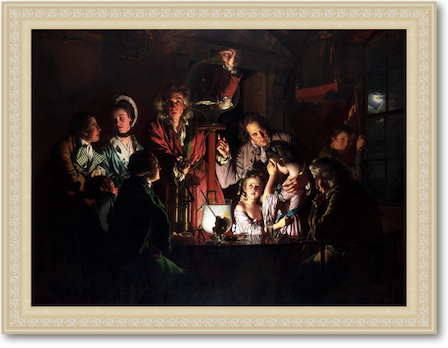
An Experiment on a Bird in the Air Pump is a 1768 oil-on-canvas painting by Joseph Wright of Derby, one of a number of candlelit scenes that Wright painted during the 1760s. The painting departed from convention of the time by depicting a scientific subject in the reverential manner formerly reserved for scenes of historical or religious significance. Wright was intimately involved in depicting the Industrial Revolution and the scientific advances of the Enlightenment. While his paintings were recognized as exceptional by his contemporaries, his provincial status and choice of subjects meant the style was never widely imitated. The picture has been owned by the National Gallery in London since 1863 and is regarded as a masterpiece of British art. The painting depicts a natural philosopher, a forerunner of the modern scientist, recreating one of Robert Boyle's air pump experiments, in which a bird is deprived of air, before a varied group of onlookers. The group exhibits a variety of reactions, but for most of the audience scientific curiosity overcomes concern for the bird. The central figure looks out of the picture as if inviting the viewer's participation in the outcome.
Improvisation 31 (Sea Battle)
Wassily Kandinsky
1913
Oil canvas
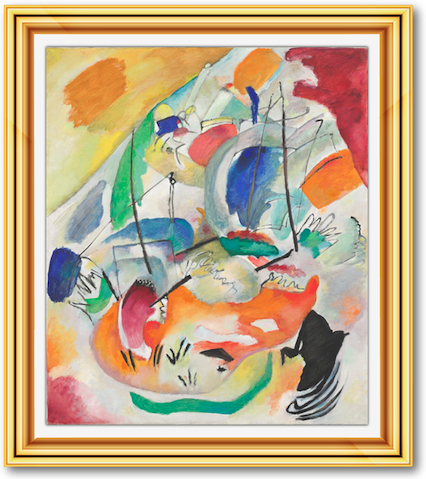
The title "Improvisations" refers to a series of works that Kandinsky painted between 1909 and 1913 which was, according to the artist, "a largely unconscious, spontaneous expression of inner character, non-material nature." Although the amorphous shapes and colorful washes of paint in Improvisation 31 (Sea Battle) may at first appear entirely abstract, they form a number of recognizable images the artist invented to represent his often biblical subject matter. The central motif of Improvisation 31 (Sea Battle) is a pair of sailing ships locked in combat, their tall masts appearing as slender black lines. Cannons blast as the ships are tossed upon turbulent waves, and, at the upper left, a city of white towers appears on the verge of toppling. Kandinsky's subject, found in a number of the Improvisations, was probably inspired by the apocalyptic imagery of the Book of Revelations. Although this work was painted on the eve of the First World War, Kandinsky denied that his paintings referred to any specific war but rather to "a terrible struggle . . . going on in the spiritual atmosphere." Kandinsky, who fervently believed that humanity stood on the brink of a new spiritual era, avowed that art could help to sever human attachment to the material world and usher in the new age.
Wall Drawing #1136
Sol Lewitt
2004
Paint on wall
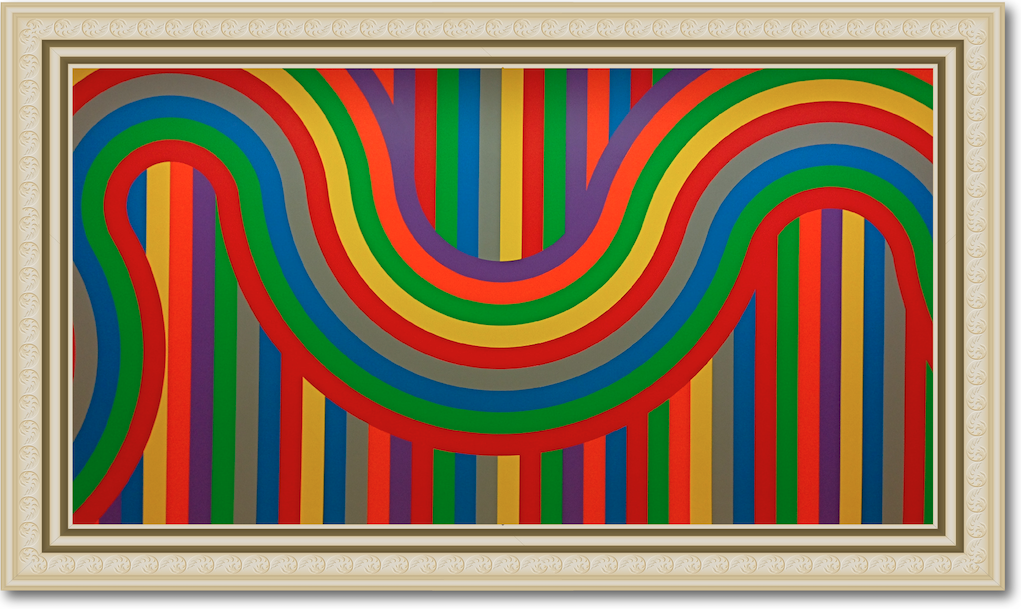
Wall Drawing #1136 is a colourful and lively acrylic paint installation by the American conceptual artist Sol LeWitt, and an example of the artist’s long-term commitment to wall drawing as a central component of his artistic practice. The work is composed of both curved and straight solid bands of colour that are painted directly onto the surface of a wall using every primary (red, yellow, blue) and secondary (green, orange, purple) colour plus grey. The curve, made up of nine interlocking bands in these seven colours (there are two bands each of red and green), snakes along the wall, touching the top and bottom of the wall at various points. The same seven colours reappear, in an irregular sequence, as vertical bands that serve as a background pattern for the curve. Every band in the wall drawing is of the same width and there is no area left empty of colour.
The Crystal Ball
John William Waterhouse
1902
Oil canvas
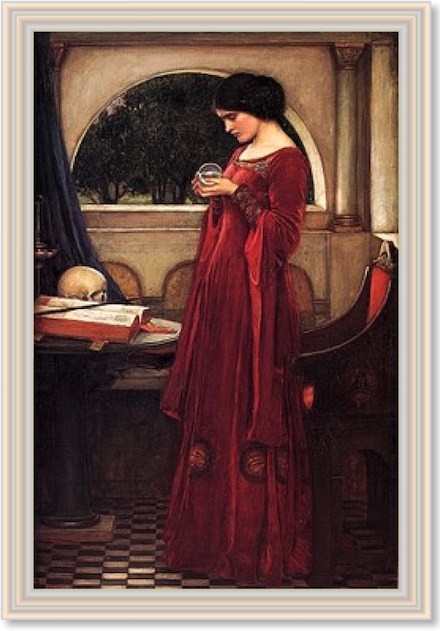
Waterhouse finished this painting in 1902 and immediately put it on display in the Royal Academy, as with most of his new work at this time. It sat alongside another of his works, titled The Missal. The Crystal Ball is consistent with the artist's style, which remained consistent over many decades. The model peers into the ball, leaving the viewer to imagine what she might be seeing and thinking at that point. Her appearance suggests it is pure and gentle, though the skull that sits at the back of the scene offers a more sinister touch of symbolism. A previous owner had taken a dislike to this addition and actually painted over it, though a recent restoration has thankfully returned the painting back to its original composition. It is the touches of architecture at the back of the room that give the painting an impression of the Renaissance, with a style differing from the Gothic approach that was found in many paintings at this time. The somewhat friendlier construction of vertical and horizontal lines of the Italian papal states of centuries before feels more suited to Waterhouse's artistic style. Common elements found in this work that persist across the artist's career include the elegant dress which hangs from the slim brunette, with the model likely to have been used in several other portraits. It is also possible that Waterhouse may have re-positioned her several times before arriving upon this preferred stance.
Tahkt-I-Sulayman Variation II
Frank Stella
1969
Acrylic on canvas
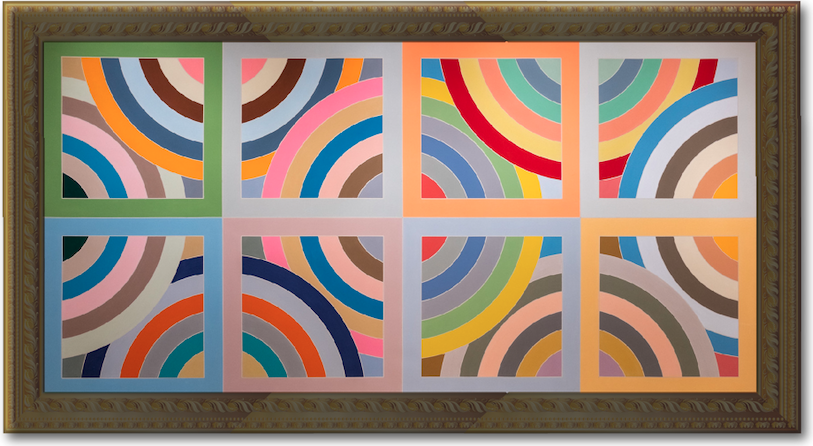
In 1967, Frank Stella began a series of brightly colored paintings based on the protractor, a drafting tool used for measuring and making angles. With this device he made three semicircular designs including the one you see here, called the “rainbow.” These designs are the basis for the many paintings in his Protractor series. Stella titled the works after circular cities and archaeological sites he saw on a 1963 trip to the Middle East: Tahkt-i-Sulayman is an ancient shrine in Iran’s Azerbaijan province. But Stella has insisted that the meaning of his work is purely formal: “My painting is based on the fact that only what can be seen there is there. It really is an object...You can see the whole idea without any confusion. What you see is what you see.”
Color Bands
Sol Lewitt
2000
Linocuts

Sol LeWitt’s work explores the near infinite possibilities of color and line. Color Bands is a series of eight prints in which mesmerizing curves and lines play on the optical effects of adjacent colors. LeWitt was a self-proclaimed conceptual artist who believed that his finished artworks served as concepts rather than as inherently valuable objects. For Color Bands, he composed a set of drawings and measurements that were executed by a master printmaker.
Black Study I
Frank Stella
1968
Collage, drawing, paint, and printed on paper
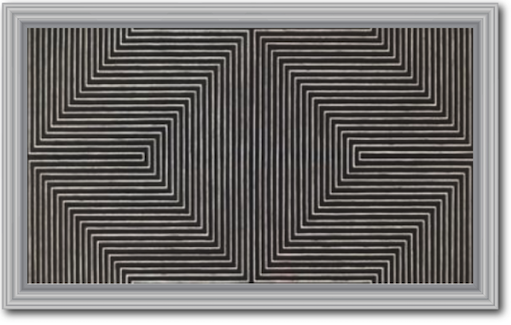
‘Black Study I' was made during Frank Stella's tenure at Kenneth Tyler’s print studio, Gemini Graphic Editions Limited in Los Angeles. Tyler designed for Stella a custom-made marker filled with lithographic ink that could be used to draw directly onto lithographic stones.. 'Black Study I' was made, when Stella was still working with Tyler, and similarly returns to the formal patterns of the Black Paintings, this time incorporating hand-drawn and painted elements. 'Black Study I' is comprised of four separate lithographs, perhaps created as parts of the earlier print series. The lithographs are collaged together, with hand additions in white gouache and black grease pencil to disguise the seams. With the "regulated pattern" of the Black Paintings, and again in the prints following the paintings, Stella explained, he forced "illusionistic space out of the painting at a constant rate."
The Marriage of Reason and Squalor, II
Frank Stella
1959
Enamel on canvas
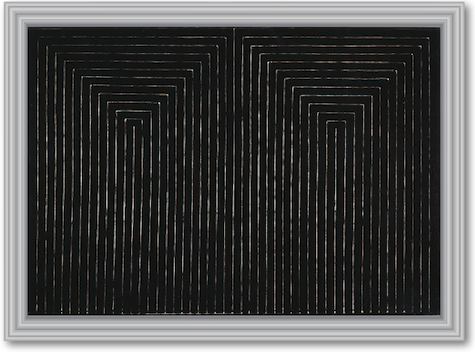
The best known American abstract painting of the 1950s was gestural and emotionally expressive (see below). This art, known as Abstract Expressionism was just that. It was abstract, but more to the point, it was subjective—it was about the experience and the very being of the artist. Frank Stella’s early series, the “Black Paintings” of 1958-1959 (below), was none of these things. The Marriage of Reason and Squalor II, one of that series, is characterized by thick black lines painted to alternate repeatedly with thin “stripes” of exposed canvas—with no room for gesture. The series features an array of designs made by differently arranging these same elements in symmetrical rectilinear patterns.
Fantasia
Kuzma Petrov-Vodkin
1925
Oil on canvas
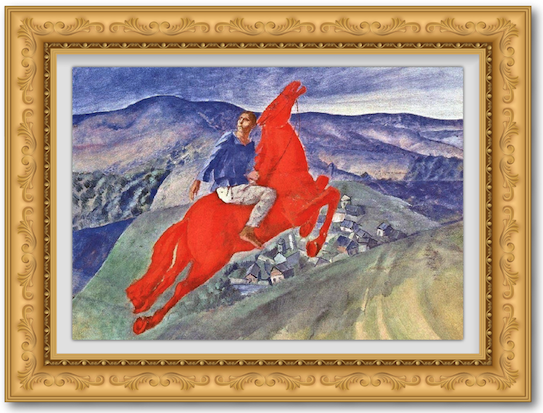
In Kuzma Petrov-Vodkin’s luminous painting Fantasy (1925), a man sits astride a horse, looking back in wonder as the steed gallops forth, its head raised to the sky. The landscape behind them is a mythic blur of blue and purple, the horse a fiery scarlet. The painting is mysterious and ethereal, and might serve as a telling allegory, capturing the ambivalence towards post-revolutionary Russia that lies at the heart of this expansive and fascinating exhibition. For the rider, gazing wistfully towards what he has left behind, there is no turning back; he must hope that the red horse – its coat the colour of revolution – is taking him to greater places.
This flaming red horse first appeared in a 1912 painting of his that created much controversy. By 1925 it has gained an élan that invites identification with the spirit of the revolution.
Wavy Lines On Grey
Sol Lewitt
1998
Woodcuts, oil on paper
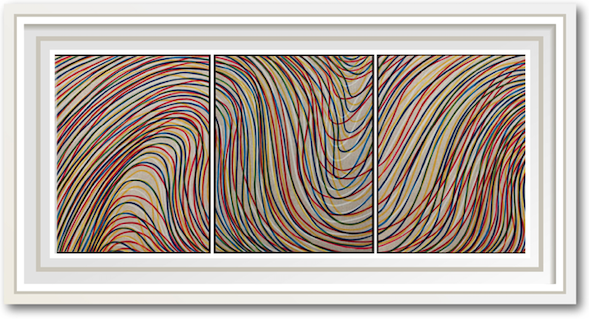
LeWitt is considered one of the most influential practitioners of conceptual art, a form in which the essence of the work is the artist´s idea rather than the craftsmanship of execution. LeWitt saw the artist in a role analogous to that of the architect, who designs a building but does not build it. He developed his artistic vocabulary from basic geometric structures and their transformation by using - as is typical for the minimalist tendencies of his generation - these fundamental elements as regular repeated modular units or as series which explore a range of possibilities in a logical, preset sequence. LeWitt was fascinated by the multiplicity of things, especially the multiplicity of things that can be generated by a simple idea.
Delaware Crossing
Frank Stella
1971
lithograph in red on Arches wove paper
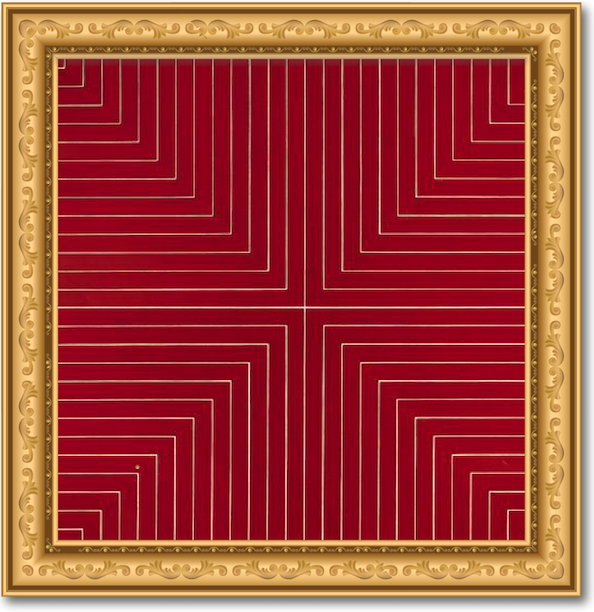
Epic in its expansive, intensely hued surface, Frank Stella’s Delaware Crossing from 1961 is among the outstanding milestones of Minimalism, emblematic of one of the most stridently revolutionary and cogent achievements in the canon of twentieth-century Contemporary Art. Stunningly beautiful in both its conceptual daring and searing sharpness of execution, Stella’s unwavering control is on dazzling display in this unrivaled and historic masterpiece. The crisp regularity and rigid symmetry of the painting’s configuration maintains direct simplicity and absolute clarity, harnessing a potent immediacy that articulates the relationship of the two-dimensional picture plane to its three-dimensional support. At and around every successive right angle, we are treated to a resplendent fury of bold prismatic radiance that at once epitomizes the stark rationality of Minimalism while blazing with an irrepressibly expressive chromatic energy.
Rabbat
Frank Stella
1964
Screenprint
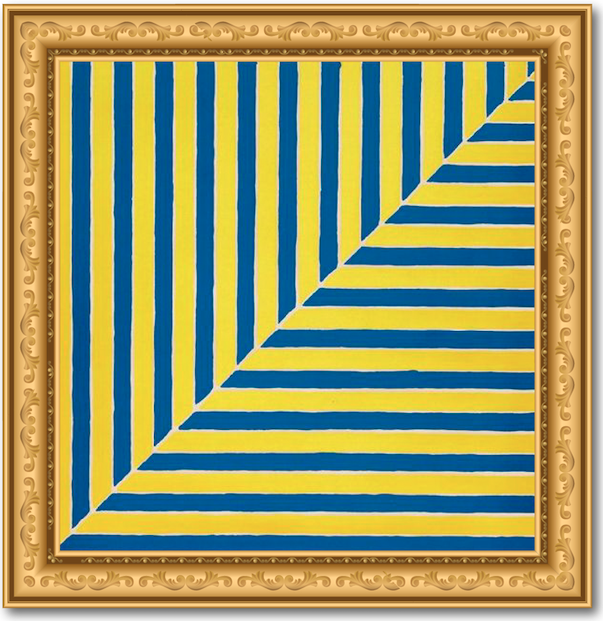
"Rabat" is an important work in Frank Stella's oeuvre as it is his first print, created in 1964. Unlike his future prints, this work was an adaptation of a gouache based on one of the paintings from the Moroccan Paintings series created that same year.
"Rabat" is a reminder of Stella's influence and proximity to the artistic developments of the 1960's including Op Art, Minimalism, hard-edge abstraction and conceptual art. While "Rabat's" composition is made of alternating bands of vibrant sky blue and banana yellow, in a vertical and horizontal pattern, the unaligned placement tricks the eye into understanding that the composition rounds at the diagonal and appears to dip into itself.